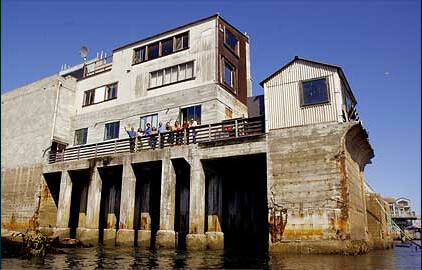PLEASURE IN CANCUN

SAND AND SUN

CANCUN is an invented city that was designed 37 years ago. The Mexican Caribbean is today a tourist destination that attracts 7 million people every year. And the number is growing… Tourists come for the white beaches, the sun, the fun…
THE OTHER SIDE TO CANCUN


In Cancun, every morning shortly after sunrise, workers rake and cart away sea grass that has washed up on the shore to make sure that the beaches are clean for the tourists. (The grasses are actually very beautiful.) Aesthetics of cleanliness are very important -- notice the man's white suit. Ironically, while the beaches are clean, scientists have real questions about water quality in both the marine and fresh water systems. (One day while swimming, David and Ana found themselves in some untreated sewage and quickly made their way to the beach.)
MEET GABRIEL, BORN IN THE YUCATAN AND HAS WORKED IN CANCUN FOR 17 YEARS.

GABRIEL'S COLONY...NO WATER, NO ELECTRICITY, AND NO ADDRESS
This is the other face of Cancun: no water, no electricity, no basic services… not even addresses thirteen minutes from the beaches of Cancun.
ANA RIDES THE BUS
After a hard workday, the workers leave the ‘Zona hotelera” to go back home. A 6 pesos-bus ride connects both realities.
MEET DR. ROBERTO IGLESIAS-PRIETO, SCIENTIST

Dr. Roberto Iglesias-Prieto is concerned with water quality of both the freshwater and marine systems. He's working with colleagues to better understand the underground rivers system of the Yucatan, which is home to the largest underground river in the world. It's suspected that much of the river system is being harmed by pollutants which seep through the soil, enter the rivers, and pollute drinking water before arriving in the sea. To learn more, visit: http://www.icmyl.unam.mx/

Dr. Iglesias-Prieto has dedicated much of his life investigating the cryptic lives of corals. And his work is showing how another pollutant, CO2, may be compromising the future of coral reefs the world over by playing a factor in rising ocean temperatures. According to Dr. Iglesias-Prieto, rising ocean temperatures can inhibit coral's ability to build their hard skeletons, and it can lead to a chain of events that eventually leads to starving the coral to death.
 Thierry Chopin and Shawn Robinson head down the dock on their way to check on their kelp and mussel rafts that adjoin some of the salmon pens on a fish farm in the Bay of Fundy.
Thierry Chopin and Shawn Robinson head down the dock on their way to check on their kelp and mussel rafts that adjoin some of the salmon pens on a fish farm in the Bay of Fundy. A rope of kelp almost ready for harvest. Completely ready for snacking, and not bad either.
A rope of kelp almost ready for harvest. Completely ready for snacking, and not bad either. Net pens like these can hold thousands of fish. Unlike most of the fish farm pens in this part of the Bay of Fundy, these pens are filled with cod.
Net pens like these can hold thousands of fish. Unlike most of the fish farm pens in this part of the Bay of Fundy, these pens are filled with cod.














